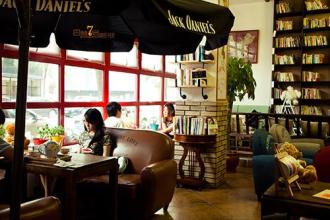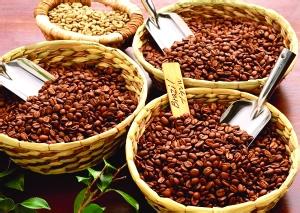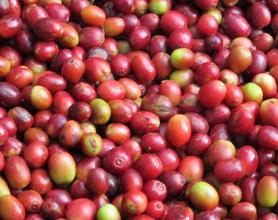Flavor characteristics of Yejia Coffee the taste of manor grinding scale treatment
Flavor characteristics of Yejia Coffee the taste of manor grinding scale treatment
Traditionally, Yega snow coffee is treated by the oldest sun treatment, but in 1972, Ethiopia introduced water washing technology from Central and South America to improve its quality, making its jasmine and citrus fragrance clearer and more refined. It has become one of the best quality beans in the world, thanks to its superb washing technology. Since the 1970s, this area has been mainly washed, making it the most popular water-washed bean producing area in Egypt.
However, in the past two years, Yejia snow coffee is unusual, frequently launched amazing sun beans, and become a boutique market Deep-Fried Chicken!
The beans are small, neat and round. Ethiopian sun beans are generally G3--G5, but the beans are G2, equal to the grade of washed beans. Although there are still a few defective beans, they are commendable compared to the sun beans of Harald and Sidamo.
The 2015 sun Yega snow caffeine has appeared in the G1 grade, surpassing the G1 washing in terms of quality and sales.
The beans are roasted until they are densely baked and brewed by hand and siphon. When grinding the beans, you can smell the sweet aroma of sun fruit, and there is also the citrus and jasmine fragrance that is the signature of Yega snow caffeine. It tastes like the three-in-one flavor of Harald, Yemeni mocha and Yega snow coffee water-washed beans!
There is a strict standard for collecting red fruits (as a result of coffee trees). Before exposure to coffee fruits, unripe green fruits or defective fruits are removed manually, and damaged or moldy fruits are removed during the sun drying process. after two weeks, the sugar and essence of the flesh and essence seep into the coffee beans, the water content is reduced to 12%, and then scrape the hardened pulp, pectin layer and pods with a planer. Take out the coffee beans and test the density and color of the beans. After eliminating the defective beans, finally, the workers picked out the defective beans with the naked eye and screened them layer by layer, resulting in the cleanliness and vulgarity of Yejia snow caffeine sun-dried beans and rich charming fruits.
Yejassefi's coffee trees were planted by European monks (a bit like Belgian monks growing wheat to brew beer) and were later transferred to farmers or cooperatives. Yejia Chuefei is actually constructed by surrounding coffee communities or cooperatives, including Edido Idido, Hafusa Harfusa, Hama Hama and Biloya near Fog Valley Misty valley, all washed with water, but there are also a small number of off-product beans engraved with sun to enhance the charming fruit aroma and mellow thickness. These mountain villages are foggy, like spring all year round, with a gentle breeze in summer, cool but not hot, rain but not damp, and no cold damage in winter, giving birth to a unique regional flavor of citrus and flowers. Coffee trees are mostly planted in farmers' own backyard or mixed with other crops in the field, the yield per household is not much, it is a typical rural coffee. Yega Xuefei won the prize beans almost from the above-mentioned coffee villages and communities.

Important Notice :
前街咖啡 FrontStreet Coffee has moved to new addredd:
FrontStreet Coffee Address: 315,Donghua East Road,GuangZhou
Tel:020 38364473
- Prev

Flavor Description of Tanzania AA Coffee Bean Taste Treatment Grind Scale Variety
Flavor Description of Tanzania AA Coffee Bean Taste Treatment Grind Scale Variety Tanzania Coffee Origin: Tanzania Coffee Bean Berry Coffee is produced in large quantities and is said to be stronger than regular coffee. Generally speaking, Tanzanian coffee beans are of exceptional quality. For example, it is produced in Moshi District near Kilimanjaro Mountain.
- Next

Colombian coffee bean Tibica flavor description taste treatment method variety grinding scale
Columbia Coffee Bean Tibica Flavor description Variety Grinding scale Tibica (Typica Tibica Tibica): the oldest native variety in Ethiopia, all Arabica are derived from Tibica. It belongs to the ancient coffee with elegant flavor, but its physique is weak, its disease resistance is poor and it is easy to catch rust leaf disease, and its fruit yield is also low, which is not in line with economic benefits. In recent years, Tibica has been in
Related
- Detailed explanation of Jadeite planting Land in Panamanian Jadeite Manor introduction to the grading system of Jadeite competitive bidding, Red bid, Green bid and Rose Summer
- Story of Coffee planting in Brenka region of Costa Rica Stonehenge Manor anaerobic heavy honey treatment of flavor mouth
- What's on the barrel of Blue Mountain Coffee beans?
- Can American coffee also pull flowers? How to use hot American style to pull out a good-looking pattern?
- Can you make a cold extract with coffee beans? What is the right proportion for cold-extracted coffee formula?
- Indonesian PWN Gold Mandrine Coffee Origin Features Flavor How to Chong? Mandolin coffee is American.
- A brief introduction to the flavor characteristics of Brazilian yellow bourbon coffee beans
- What is the effect of different water quality on the flavor of cold-extracted coffee? What kind of water is best for brewing coffee?
- Why do you think of Rose Summer whenever you mention Panamanian coffee?
- Introduction to the characteristics of authentic blue mountain coffee bean producing areas? What is the CIB Coffee Authority in Jamaica?

